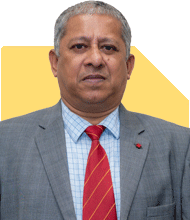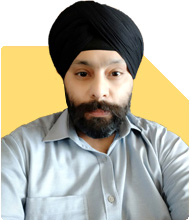43 year old with 2.4cr in MF, 50 lakh in PF, 10 lakh in medical insurance & dependent parents - Can I retire now?
Ramalingam Kalirajan |8204 Answers |Ask -Follow
Mutual Funds, Financial Planning Expert - Answered on Feb 06, 2025
He has an MBA in finance from the University of Madras and is a certified financial planner.
He is the director and chief financial planner at Holistic Investment, a Chennai-based firm that offers financial planning and wealth management advice.... more

Hi I'm 43 years old, not with spouse and live with my dependent parents (80,70) and 13 year old son. I have 2.4cr in MF, 50 lakh in PF, FD and 10 lakh in gold ETF. I have 10 lakh medical insurance for myself and son which will increase by 10 lakh every year upto 2 crore. The house belongs to my parents, so I don't pay rent. I take care of my parents and son and the overall expenses are approx 1 lakh a month now including health check ups and vacations. I anticipate an expense of 40-50 lakh for my son's education in the future. I have an elder sibling who will share big hospitalization expenses for my parents. Can I retire from my full time job now? I plan to do freelancing to earn 4-5 lakh per annum if necessary.
Current Financial Position
Mutual Funds: Rs 2.4 crore
PF and FD: Rs 50 lakh
Gold ETF: Rs 10 lakh
Total Corpus: Rs 3 crore
Planned Freelancing Income: Rs 4-5 lakh per annum
Your total corpus appears substantial, but future expenses and inflation need consideration.
Expected Future Expenses
Current Monthly Expenses: Rs 1 lakh (Rs 12 lakh per annum)
Son’s Education: Rs 40-50 lakh over the next 5-10 years
Medical Expenses for Parents: Uncertain but partially shared with a sibling
Personal Medical Coverage: Increases yearly, but out-of-pocket costs may arise
Expenses will increase over time due to inflation.
Investment Allocation and Growth Potential
Your investments must generate enough returns to support expenses for the next 40+ years.
Equity Growth: Required to counter inflation and maintain wealth
Debt Stability: Ensures liquidity and covers near-term needs
Medical Corpus: Should remain untouched for emergencies
Careful asset allocation will help in managing risks.
Impact of Freelancing Income on Retirement Decision
Earning Rs 4-5 lakh per annum will reduce the withdrawal pressure on investments.
Even part-time work ensures better cash flow for annual expenses.
It also helps in maintaining a structured routine and professional engagement.
If freelancing continues for 10-15 years, retirement sustainability improves significantly.
Final Insights
Your financial position is strong, but complete retirement depends on expense control and investment growth. Continuing freelancing for additional income will provide financial security. A structured withdrawal plan and diversified asset allocation will ensure long-term stability.
Best Regards,
K. Ramalingam, MBA, CFP,
Chief Financial Planner,
www.holisticinvestment.in
https://www.youtube.com/@HolisticInvestment
You may like to see similar questions and answers below
Ramalingam Kalirajan |8204 Answers |Ask -Follow
Mutual Funds, Financial Planning Expert - Answered on Aug 23, 2024
Ramalingam Kalirajan |8204 Answers |Ask -Follow
Mutual Funds, Financial Planning Expert - Answered on Nov 05, 2024
Ramalingam Kalirajan |8204 Answers |Ask -Follow
Mutual Funds, Financial Planning Expert - Answered on Jan 28, 2025
Ramalingam Kalirajan |8204 Answers |Ask -Follow
Mutual Funds, Financial Planning Expert - Answered on Jan 31, 2025
Harsh Bharwani |79 Answers |Ask -Follow
Entrepreneurship Expert - Answered on Apr 08, 2025
Milind Vadjikar |1157 Answers |Ask -Follow
Insurance, Stocks, MF, PF Expert - Answered on Apr 08, 2025
Milind Vadjikar |1157 Answers |Ask -Follow
Insurance, Stocks, MF, PF Expert - Answered on Apr 08, 2025
Milind Vadjikar |1157 Answers |Ask -Follow
Insurance, Stocks, MF, PF Expert - Answered on Apr 08, 2025
Milind Vadjikar |1157 Answers |Ask -Follow
Insurance, Stocks, MF, PF Expert - Answered on Apr 08, 2025
Ramalingam Kalirajan |8204 Answers |Ask -Follow
Mutual Funds, Financial Planning Expert - Answered on Apr 08, 2025
Prof Suvasish Mukhopadhyay |557 Answers |Ask -Follow
Career Counsellor - Answered on Apr 08, 2025
Inderpaul Singh |53 Answers |Ask -Follow
Leadership Coach - Answered on Apr 08, 2025
Inderpaul Singh |53 Answers |Ask -Follow
Leadership Coach - Answered on Apr 08, 2025
Dr Dipankar Dutta |1109 Answers |Ask -Follow
Tech Careers and Skill Development Expert - Answered on Apr 08, 2025












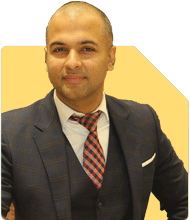


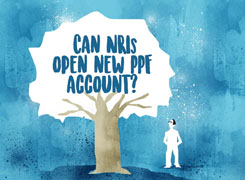

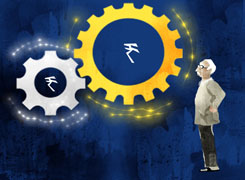
.jpg)
